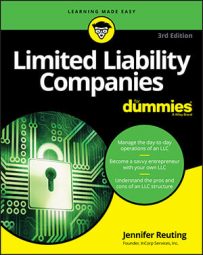Operating agreements generally don’t get into specific issues such as minor employment matters and day-to-day business operations (with the exception of major decisions and/or purchases). You don’t look at your operating agreement to see what sort of commission structure you should impose on your new sales reps. Nor should you look to your operating agreement to tell you what credit terms or payment plans you can give to your customers.
Your operating agreement covers the bigger issues, such as large purchases, the decisions to take on debt, profit and loss distributions, selling membership shares, and assignment of duties . . . the things that can make or break your business. It paints the big picture as to how your entity is to operate.
If you are a small business, creating an operating agreement may seem like overkill, but it’s absolutely necessary — not to mention a legal requirement in most states.
As your business grows, you’ll need guidance, and you should be able to turn to your operating agreement. If you and your partners negotiate and decide on everything in the beginning, then you’re likely to experience less chaos and fewer disagreements when your company hangs in the balance.
Creating a clear-cut ownership structure
The most common reason for a new venture to fail can be boiled down to discord among the partners. The thing is, starting a new venture is exciting . . . especially that initial idea phase, where you start painting a picture of the brilliant future that awaits you and your partners.
Usually it transpires somewhat like this: A few friends are together and one has a seed of an idea. He tells his buddies and then it steamrolls. Ideas are excitedly thrown into the mix, some are tossed, and others are kept — until a rough blueprint for a business model has been fleshed out. Sometimes this happens over a few hours, and sometimes the process takes months.
Regardless, when a plan finally comes together, everyone is excited to jump on board the moving train. It’s usually at this stage that most failed startups set up their eventual demise.
Here’s the rub: Everyone is equally excited, and everyone took equal part in the business planning, so everyone should share equally in the ownership of the business, right?
Wrong. Business ideas don’t hold much value — they aren’t even patentable — it’s the execution of those ideas that matters. That is where the ownership needs to be distributed. You need to take an accurate count of what every owner will be contributing and then structure the ownership of your LLC to support those contributions.
You need to have built-in safeguards for accountability — in other words, if a partner doesn’t deliver what she promised, she doesn’t get the membership shares.
You need to keep in mind that this is one of the core functions of your operating agreement.
LLCs can have different classes of membership, so all members don’t have to be treated the same. Some members can get voting rights while others have to remain silent. Some members can also be managers and take charge of the company’s day-to-day operations, while others can only watch from afar.
Also, some members have certain powers that are inherent to owning the company, such as deciding who manages the LLC and whether to accept new members.
Assigning manager titles and duties
Regardless of whether your LLC is manager-managed or member-managed, the managers need boundaries and guidelines. Even if you are the only manager and you want unlimited decision-making power, you need to allow for this in your company’s operating agreement.
Some states require it by law, but regardless — it will keep you out of trouble when one of your non-managing partners contests that lease agreement you entered into or that building you purchased.
Forming your operating agreement is the perfect time for you and your partners to sit down and delineate all the specific roles and titles that each manager will take on.
For instance, one manager may be great at numbers and will take on the role of chief financial officer, whereas another manager may have a solid vision of the company and is the person to lead the others on the path to success — this person can be named president or chief executive officer.
In certain situations, you may also want to consider adopting the “corporate” management structure for your LLC. This structure comes with the preset roles of President, Secretary, Treasurer, and Director.
One example of where this may be helpful is if you have an investor who wants the immediate tax deduction that an LLC can offer (assuming the LLC doesn’t bring in a profit its first year), but prefers the traditional management structure of a corporation.
Keep in mind that although managers are legally called managers by the state, they can have whatever titles they want. So, even if you don’t elect the full corporate management structure, don’t think you’re missing out on the title of president or CEO if you’re forming an LLC!

